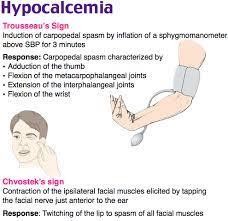A client is brought to the hospital because of severe abdominal pain, nausea, and vomiting. The client reports increased pain in the abdomen and in the epigastric region radiating to the back when lying supine. Upon physical assessment, the nurse finds that the client has fever and hypotension.
What should the nurse infer from these findings?
The client has chronic pancreatitis.
The client has cholecystitis.
The client has cholelithiasis.
The client has acute pancreatitis.
The Correct Answer is D
Choice A rationale: Symptoms and findings described align more with an acute, severe condition rather than a chronic one.
Choice B rationale: While cholecystitis can present with similar symptoms, the radiation of pain to the back is more indicative of a different condition.
Choice C rationale: Cholelithiasis (gallstones) might cause abdominal pain but typically doesn’t lead to fever and hypotension.
Choice D rationale: Symptoms including severe abdominal pain, radiation to the back, fever, and hypotension suggest acute pancreatitis, a potentially serious condition requiring urgent medical attention.
Nursing Test Bank
Naxlex Comprehensive Predictor Exams
Related Questions
Correct Answer is C
Explanation
Choice A rationale: Chvostek and Trousseau signs are not typically associated with hypothyroidism.
Choice B rationale: These signs are not commonly related to pineal tumors.
Choice C rationale: Chvostek and Trousseau signs, indicating neuromuscular irritability due to hypocalcemia, are often seen in hypoparathyroidism.
Choice D rationale: Chvostek and Trousseau signs are not characteristic findings in pheochromocytoma.

Correct Answer is C
Explanation
Choice A rationale: Assessing the UOP is important, but not as urgent as correcting the potassium imbalance.
Choice B rationale: Obtaining a 12-lead ECG can help monitor the cardiac status, but it does not address the cause of the problem.
Choice C rationale: The PMHCP can order potassium replacement to prevent cardiac arrhythmias and other adverse effects of low potassium levels.
Choice D rationale: Stopping the regular insulin infusion can worsen the DKA and increase the risk of cerebral edema and coma.
Whether you are a student looking to ace your exams or a practicing nurse seeking to enhance your expertise , our nursing education contents will empower you with the confidence and competence to make a difference in the lives of patients and become a respected leader in the healthcare field.
Visit Naxlex, invest in your future and unlock endless possibilities with our unparalleled nursing education contents today
Report Wrong Answer on the Current Question
Do you disagree with the answer? If yes, what is your expected answer? Explain.
Kindly be descriptive with the issue you are facing.
